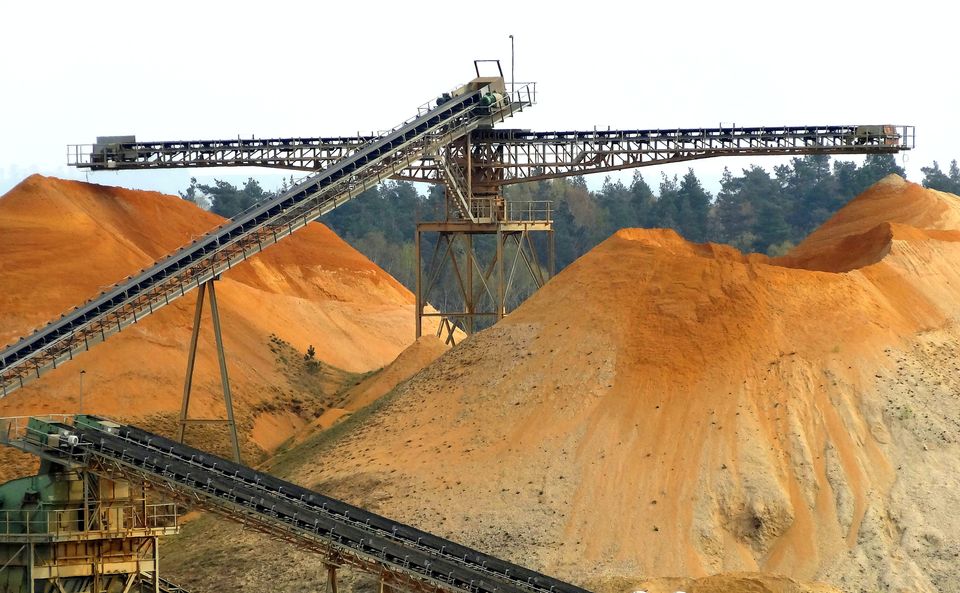Sustainability-linked loans are not (yet) where they need to be

Sustainability-linked loans, which offer interest rate discounts when companies meet certain KPIs, are gaining popularity – but the immaturity of the market, combined with little oversight from regulators, means they sometimes lack ambition.
At the end of September, Spanish bank BBVA arranged a US$200 million club deal facility linked with sustainability key performance indicators (KPIs) for Peruvian mining company Hochschild, through its subsidiaries Ares and Amarillo Mineraçao do Brasil.
In its press release, BBVA said the KPIs related to “physical security, water and waste”.
When contacted by CSO Futures, the bank’s Head of Corporate and Syndicated Lending in Peru, Gonzalo Rojas Fernández, specified that the KPIs are linked to the number of accidents per million work hours, as well as waste and water usage in the mine camps.
This choice of KPIs was unexpected for several reasons. First, the health and safety of workers is already deemed a business priority for mining companies, and the number of fatal accidents has been on a downward trend since 2012, at least for members of the International Council on Mining and Metals (ICMM). Hochschild is not one of them, but it reported just two fatal accidents in 2021, though 27 of its workers were killed in a bus accident the same year.
Perhaps more surprising is the fact that the environmental KPIs chosen only apply to the mine camps – that is where workers are accommodated, not in the operations themselves. Globally, mining is responsible for large amounts of (sometimes toxic) waste, with 5 to 7 billion tonnes of tailings alone (the materials left over after extracting metal from rocks and earth). A 2019 study even estimated the worldwide generation of solid wastes from the primary production of mineral and metal commodities at over 100 billion tonnes per year. And although estimates about the waste generated at mine camps are hard to come by, it is no doubt just a small fraction of these numbers – the same could be said for water.
Asked how the KPIs were selected, Rojas Fernández explained: “Our Sustainable Finance Department has to confirm that KPIs are challenging enough, and we also get a third party opinion from an external consultant to certify they are aligned with sustainability principles and the bank’s sustainability strategy.” However, he declined to answer whether other KPIs around the miner’s entire operations were considered.
Guidance for sustainability-linked loans: open to interpretation
Sustainability-linked loans (SLLs) may be new, but they are gaining popularity: according to Environmental Finance Data, there were 500 SLLs in the global market in 2021, with a combined value of over US$180 billion – US$100 billion more than the previous year.
And while there is no official regulation governing the structure of sustainability-linked loans or the KPIs used, industry guidance does exist. The International Capital Markets Association (ICMA) issued Sustainability-Linked Loan Principles (SLLP) in 2019. The principles state that sustainability performance targets (SPTs) should be “ambitious and meaningful to the borrower’s business”, but although external review of such targets is “strongly recommended”, it is ultimately a decision made between borrower and lender.
The most commonly used KPIs revolve around carbon/GHG emissions, “global ESG assessments” and energy, but Environmental Finance Data lists 19 different KPIs that have so far been used in these loans.
Manju Seal, a Wall Street veteran and former Head of Sustainable Finance at BMO, tells CSO Futures: “The sustainability performance targets (SPTs) are up to lender group and their client: it's between them to figure out what they can be, how robust they can be, and whether they are really making an impact, and fulfilling the mission of a sustainability-linked loan.”
She adds that although ICMA “has done a good job of being an anchor in the market”, interpretation by market participants is key: “How we interpret and actually implement the sustainability-linked loan principles and SPTs to improve the CSR profile is really dependent on the financial institution(s) and the clients. The principles are at a high level and voluntary recommended guidelines.”
Read also: Growth pains ahead for sustainable finance
According to sustainability ratings firm Sustainalytics, sustainability KPIs should ideally be compared to targets set by industry peers and allow for comparison with science-based trajectories or references. “A peer review is recommended to evaluate what similar companies are targeting and how those targets compare to those of your company as the issuer,” the firm adds.
Industry benchmarking: easier said than done
Sustainability-linked loans in the mining sector are new, and a quick scan of the ones that have been granted suggests that benchmarking may be a difficult exercise.
The first such loan in the industry was provided by the International Finance Corporation to Anglo American in June 2022. The US$100 million, 10-year loan was tied to social KPIs for communities in Anglo American’s mining regions, including the creation of jobs and the improvement of the quality of education for 73,000 students. They were linked to the miner’s Sustainable Mining Plan to support schools in host communities to perform within the top 30% of state schools nationally and to create or support three offsite jobs for every onsite job at its operations by 2025.
More recently in May 2023, Australian mining company Gold Fields refinanced a US$1.2 billion revolving credit facility, linking it for the first time to the achievement of three “key ESG priorities” of gender diversity, water stewardship and decarbonisation.
The five-year loan means these KPIs must be met through 2027, so the exact values to be achieved in this timeframe have not been specified, but they are aligned with the company’s 2030 goals: 30% women representation (from the current 23%), 80% recycled/reused water (from 75% now), and 30% net Scope 1 and 2 emissions reduction.
Gold Fields announced another A$500m syndicated credit facility with 10 Australian banks in early October, linked to the same sustainability KPIs. While comparison is difficult in such a varied and widespread sector, it is worth noting that Gold Field’s KPIs apply to its entire operations.
No obligations on the use of proceeds
Compared to green loans and green bonds, the proceeds of which must be used for sustainability purposes, there is no obligation to use sustainability-linked loans for the development of ESG initiatives.
And according to Seal, this has contributed to their popularity. “The reason they became so popular in the last few years is unlike green bonds, where you had to demonstrate that the use of proceeds of the bonds were being earmarked for environmental projects, there is no caveat that a sustainability-linked loan has to be specifically used for environmental projects; instead it can be for general corporate use,” she says.
Despite this flexibility, SLLs are considered part of financial institutions’ sustainable finance portfolios. BBVA, for instance, has a goal to mobilise €300 billion in sustainable financing by 2025 – and the Hochschild loan falls into this remit, regardless of how the money ends up being used.
For Seal, all market participants need to do their part to increase the transparency and credibility of sustainability-linked loans, in the same way this has been done for green bonds.
“We really ought to think about every issuance we do, every loan, every bond: how are we ensuring that the spectre of greenwashing does not arise? Because when we fail to do that, we take the market a couple of steps back, and we plant seeds of doubt in people's minds. And then companies retract or CFOs retract, and we really want to avoid that. We need to make sure that we do a good job of every step we take to be consciously working towards building greater trust,” she warns.







Member discussion